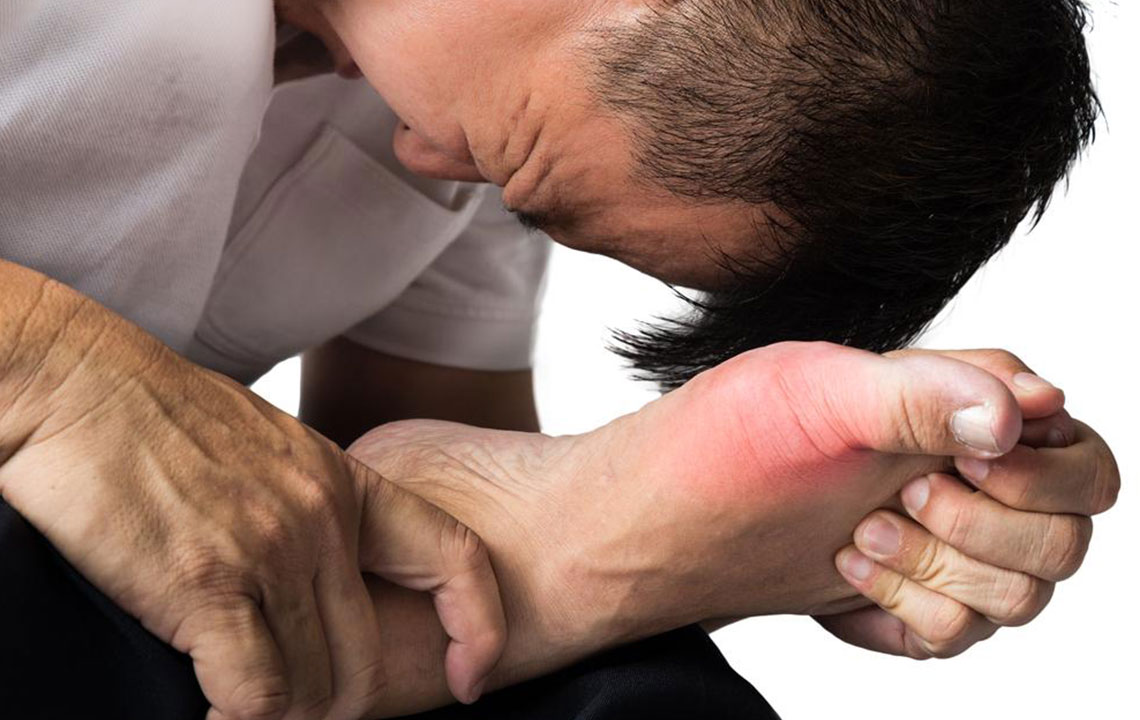5 Effective Treatments for Gout

Gout is a kind of arthritis that affects the joints in the body such as the base of the big toe, knees, finger joints and wrist. It is caused due to the imbalance in the uric acid levels in the body. When the body starts producing an excessive amount of uric acid due to any reason, it leads to crystallization and conversion into urate. These urate crystals get deposited around the joints. This causes immense pain, inflammation, and discomfort in these areas. The affected joints are usually sore and swollen, and even the slightest touch could trigger pain and discomfort in them. There is no pre-warning of a gout attack. It can strike at any time and can cause severe pain which requires immediate attention. This pain usually lasts up to seven to ten days. For some people, this can be worse, and the best possible treatment course is to consult a physician and start a course of medications.
Gout recurrence indicates high uric acid levels in the body. If it is persistent, it can lead to severe issues such as kidney problems, renal failure, and severe muscle, tendon or joint damage. Both antibiotic medicines prescribed by the physician and home remedies work in treating gout. However, while the home remedies focus on reducing the inflammation once a gout attack happens, the medications are more of a long-term solution for treating gout. While some medicines treat gout by lowering the uric acid levels in the body by blocking its production, some are helpful in reducing the swelling and inflammation. Gout treatments are also recommended to be taken to prevent further attacks.
Below is the list of therapies, remedies, and medicines to find out more about gout treatment options available to you.
- Nonsteroidal anti-inflammatory drugs (NSAIDs) and corticosteroids
NSAIDs like ibuprofen and corticosteroids are anti-inflammatory medicines that are given when the gout attack happens. They help to reduce the physical symptoms of a gout attack like swelling of the joint and inflammation to provide instant relief from the condition. - Urate-lowering therapy (ULT)
For the people suffering from long-term gout problems or the ones who have developed other health issues due to stiff gouty joints, the physicians suggest a long-term solution. Urate-lowering therapy is one of the useful long-term solutions to gout problem which treats the root of the problem and prevents it from recurring. The ULT works by systematically lowering the urate levels in the body, thus reducing the chances of its deposition around the joints. It can help you get rid of gout forever.
Home treatments for gout
Apart from medications, there are home remedies that work when gout attacks happen. These solutions are useful if you do not have a severe case of gout or when the medicines are just starting to work. These remedies can help increase the healing speed. A few home remedies for gout treatments are:
- Ice Packs
Ice packs or cold compress are a great way to heal the gout pain and soreness. A cold compress is one of the first treatments you can do at home while the medicine starts working. The ice pack works by numbing the area and blocking the nerves that send the pain signals to the brain. It can be effective in reducing the swelling and soreness around the joint affected by gout. Apply a bag full of ice on gout affected area for 20 maximum minutes. - Apple cider vinegar
Apple cider vinegar is known for its anti-inflammatory properties. It can help in reducing the inflammation caused due to gout. It can be applied topically, or it can be taken orally with water. For consuming it orally, mix a tablespoon of ACV with half a glass of water and take it daily. - Ginger root
Ginger root is a natural gout medicine owing to its anti-inflammatory properties. Prepare a cup of hot ginger root tea by boiling ginger roots in a glass of water and reducing it to half its quantity. For maximum benefits, add a pinch or two of turmeric powder. It will help you in reducing the soreness in the joint and will alleviate the pain. This ginger tea also has other skin and health benefits. Drink ginger tea twice a day for best results.
Find the best remedy that works for you during a gout attack and follow it up whenever it strikes next. You can also choose to follow two or more remedies or treatment courses together. Just make sure that they do not interfere with each other in their healing process.


